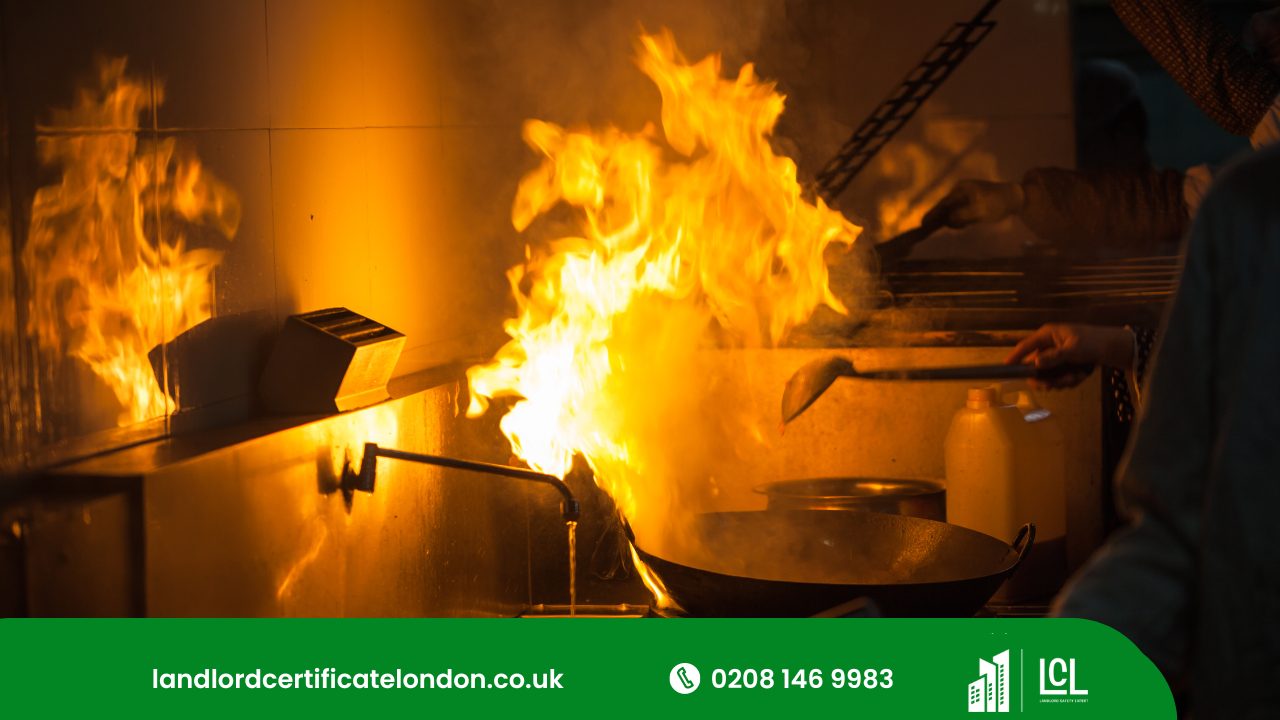
Discover the secrets of fire safety by exploring the five essential fire classes—A, B, C, D, and K. This comprehensive guide will equip you with the knowledge to identify various burning materials, from ordinary combustibles to flammable metals and kitchen oils. Discover the right extinguishing techniques tailored for each class, empowering you to prevent fire-related disasters and safeguard your environment with confidence.
Understanding these classes not only enhances preparedness but also influences the selection of fire extinguishers and safety protocols. As we explore the unique challenges and solutions associated with each fire class, it becomes apparent how tailored strategies are essential for effective fire response. What remains to be seen is how these strategies are implemented in real-world scenarios to safeguard lives and property. Let’s understand Understanding Fire Classes: A, B, C, D, and F Explained.
The 5 Different Classes of Fires
Understanding the different classes of fires is crucial for effective fire prevention and suppression. Fire safety professionals categorize fires into five distinct classes based on the fuel source involved, which dictates the appropriate suppression techniques and safety measures necessary.
Class A covers common solid materials like wood and paper,
Class B focuses on flammable liquids and gases such as gasoline and grease,
Class C addresses electrical fires from appliances and wiring,
Class D highlights the hazards of burning metals like sodium and magnesium,
Class K targets grease fires specifically from cooking.
Each fire class demands targeted fire prevention strategies and knowledge of the correct suppression methods to ensure safety and minimize damage.
Class A Fires: Ordinary Combustibles
Class A fires, commonly involving ordinary combustibles such as wood, paper, and fabric, represent the most frequently encountered fire type in both residential and commercial settings. Understanding the behavior of these materials under fire conditions is crucial for effective fire prevention and management.

Common combustibles share characteristics that influence fire behavior, including their propensity to ignite easily and sustain combustion, leading to rapid fire growth if not properly managed.
The following table highlights key aspects of Class A fires:
| Feature | Description | Importance |
|---|---|---|
| Fuel Type | Wood, paper, fabric | Common in everyday environments |
| Ignition Ease | High susceptibility to ignition | Quick-fire spread potential |
| Combustion | Produces ash; smoldering can lead to re-ignition | Continuous monitoring needed |
| Extinguishing Media | Water, mono ammonium phosphate | Effective in suppressing flames |
| Prevention Measures | Regular removal of waste, installation of smoke detectors | Reduces fire risks significantly |
In-depth knowledge of these traits is essential for designing fire safety protocols that effectively mitigate risks associated with Class A fires. Fire safety professionals must prioritize regular risk assessments and adherence to established safety standards to manage and reduce the incidence of these common fires effectively.
Class B Fires: Flammable Liquids & Gases
While Class A fires involve ordinary combustibles, Class B fires present unique challenges due to their involvement with flammable liquids and gases such as gasoline, propane, and butane. These substances require specialized handling and storage protocols to mitigate risks effectively. Class B fires are notably volatile and can escalate rapidly if not managed with precise and immediate action.

The cornerstone of managing these fires lies in understanding the properties of the involved flammable materials. Safety measures, particularly in liquid storage, demand robust containment systems that prevent leaks and spills, which can significantly reduce ignition sources.
Facilities storing large volumes of flammable liquids should be equipped with fire suppression systems designed specifically for Class B fires, such as foam or carbon dioxide systems that can effectively smother flames by isolating the fuel from oxygen.
In addition to physical safety measures, training, and readiness play critical roles. Personnel must be thoroughly trained in flammable safety protocols, including proper handling techniques and emergency response strategies.
Regular drills and audits of safety equipment and procedures ensure preparedness and can prevent catastrophic outcomes. By prioritizing these safety protocols, risks associated with Class B fires can be substantially minimized, safeguarding both personnel and property from severe damage.
Class C Fires: Electrical Fires
Electrical failures pose significant hazards, particularly in settings laden with extensive electronic equipment and wiring systems. Class C fires, or electrical fires, are fueled by the malfunction or failure of electronic devices, wiring, or other electrically energized objects.
Understanding how to manage these fires is critical, as they involve electrical hazards that require specific handling to ensure safety and minimize damage.

Here are the key aspects to consider in the event of a Class C fire:
- Immediate Power Disconnection: Ensure the electrical supply to the affected area is cut off to prevent further electrical hazards and reduce the risk of fire spreading.
- Use of Proper Extinguishing Agents: Non-conductive extinguishing media, such as CO2 or dry chemical fire extinguishers, are essential. These help in avoiding the dangers of electrical conduction which water-based extinguishers would exacerbate.
- Regular Circuit Maintenance: Keeping electrical circuits and equipment well-maintained is vital in preventing electrical fires. This involves routine inspections and timely repairs of faulty systems.
- Fire Safety Compliance: Adherence to strict building codes and safety standards is crucial. Ensure that all electrical installations meet the required regulations to prevent potential ignition sources.
Class D Fires: Combustible Metals
Understanding the unique challenges posed by Class D fires is important, particularly because they involve combustible metals such as titanium, magnesium, and potassium. These metals, when ignited, behave differently from typical organic materials, presenting specific metal fire hazards that demand specialized knowledge and handling techniques. The highly reactive nature of these metals makes water a dangerous choice, as it can trigger violent reactions, potentially exacerbating the fire.

Extinguishing agents for Class D fires are chosen based on their ability to smother and cool the flames without causing reactions that might worsen the fire scenario. Commonly used agents include dry powder extinguishers specifically formulated for metal fires. These agents work by isolating the metal from oxygen and dissipating heat away from the fire source.
| Metal | Recommended Extinguishing Agent |
|---|---|
| Magnesium | Dry Powder (Class D specific) |
| Titanium | Dry Powder (Class D specific) |
| Potassium | Dry Powder (Class D specific) |
| Sodium | Dry Powder (Class D specific) |
| Aluminum | Dry Powder (Class D specific) |
Professionals dealing with such volatile substances must be thoroughly trained in the correct techniques and safety measures to effectively manage and mitigate risks associated with combustible metal fires.
Class K Fires: Grease & Cooking Fires
Class K fires, commonly originating from cooking oils, fats, and greases, present unique challenges in both residential and commercial kitchens.
These fires are notorious for their ability to ignite and spread rapidly, complicating firefighting efforts and increasing the risk of extensive property damage and personal injury. Understanding the specific nature of Class K fires is crucial for effective management and suppression.

Here are some key aspects of Class K fires:
- High Flash Point: Cooking oils and greases can reach very high temperatures before igniting, which typically occurs around 360°F to 375°F. This high flash point contributes to the sudden and fierce nature of Class K fires.
- Extinguishing Methods: Traditional firefighting methods like using water can exacerbate grease fires. Special Class K extinguishers use wet chemical agents that cool the grease and react to form a foam layer, suffocating the fire and preventing re-ignition.
- Rapid Spread: Once ignited, the high energy content of oils and greases enables the fire to spread swiftly across a kitchen, making immediate response crucial.
- Grease Hazards: Accumulated grease, particularly in ductwork and ventilation systems, poses significant ongoing fire risks, necessitating regular maintenance and inspection to ensure cooking safety.
Understanding these characteristics helps in developing targeted strategies to manage and mitigate the risks associated with Class K fires effectively.
Prevention and Safety Tips
Effective fire prevention and safety measures are critical in mitigating the risks associated with different classes of fires. A comprehensive risk assessment forms the backbone of fire safety, identifying potential hazards specific to each fire class and enabling tailored preventive strategies.
For Class A fires involving common combustibles, regular inspections and maintaining clean, uncluttered environments are imperative. Flammable liquids and gases in Class B fires demand stringent storage protocols and the use of appropriate containment systems to prevent leaks and spills.
Electrical fire risks in Class C can be significantly reduced by ensuring all installations comply with the latest safety standards and by conducting periodic checks on electrical equipment to detect and rectify potential faults early.
In environments prone to Class D fires, such as laboratories or industries dealing with reactive metals, workers must be trained in handling materials safely and equipped with specific extinguishing agents designed for metallic fires.
Lastly, Class K fire safety emphasizes the importance of using proper cooking techniques, regular maintenance of cooking equipment, and the installation of temperature controls to prevent overheating.
Each measure is a critical component in a holistic fire prevention strategy, ensuring safety and minimizing the risk of fire outbreaks in various settings.
Extinguishing Techniques Explained
Extinguishing techniques for each class of fire requires specific approaches and materials to ensure effective suppression and safety. Mastering these methods is essential for anyone responsible for fire safety.
Each class of fire, as identified—A, B, C, D, and K—has unique characteristics that necessitate distinct extinguishing agents and tactics.
- Class A Fires: Use water or monoammonium phosphate-based extinguishers. The goal is to cool the burning materials below their ignition point and to saturate the fibrous materials to prevent re-ignition.
- Class B Fires: Apply foam, carbon dioxide, or dry chemical extinguishers that can inhibit the chemical reactions occurring in the flame. These agents work by smothering the fire, cutting off the oxygen supply, or interrupting the fire’s chemical chain reaction.
- Class C Fires: Employ non-conductive extinguishing agents like carbon dioxide or dry chemical extinguishers. These ensure that the fire suppression process doesn’t conduct electricity back to the operator.
- Class D Fires: Utilize specialized dry powder extinguishers designed for metal fires, which separate the fire from its oxygen source and absorb the heat.
For Class K fires, wet chemical extinguishers are effective as they not only smother the fire but also create a barrier that prevents re-ignition.
Mastery of these techniques ensures efficient fire suppression and enhances safety in diverse environments.
Conclusion
In conclusion, a comprehensive understanding of the five fire classes—A, B, C, D, and K—is essential for effective fire prevention and safety. Each class requires specific prevention strategies and extinguishing methods tailored to its unique properties and risks. Mastering this knowledge enhances preparedness in handling potential fire scenarios, minimizing damage, and ensuring safety. Continuous education and adherence to safety protocols are imperative in mitigating fire-related hazards in diverse environments.
Check Out Our Other Services
| EICR | Commercial EICR | Emergency Light Certificate |
|---|---|---|
| Electrical Diagnostic | PAT Testing | Fuse Box Installation |
About the Author: LandlordCertificate
Related Posts
Get Social
Recent Posts
- The Role of Fire Alarm Installation in Building Safety
- How Often Should a Fire Risk Assessment Be Reviewed?
- What must landlords get right for Fire Risk Assessment London compliance?
- UK Gas Safety Regulations for Landlords & Tenants: Introduction to Gas Safety Certificates
- Check If Your Gas Engineer is Registered: London Gas Safety Certificate London













